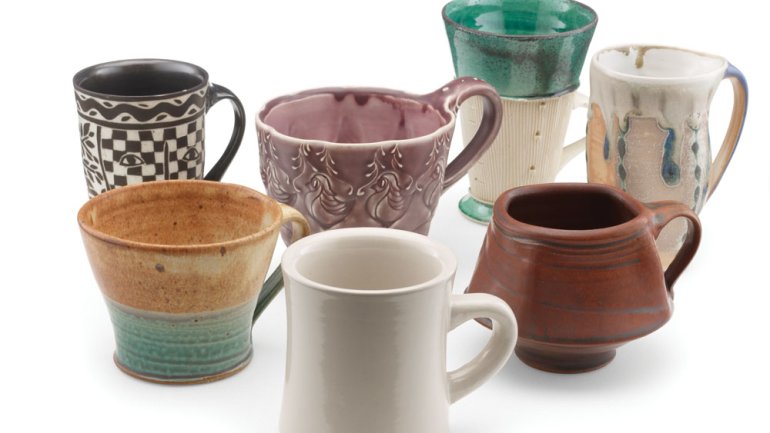Can a Mass-Produced Object Be Craft?
Can a Mass-Produced Object Be Craft?
Q: “Craft” has long been synonymous with “handmade.” But could we legitimately refer to a well-designed mass-produced object as craft?
A: I have cupboards full of handmade ceramics, and I love them: squat teacups by Ellen Shankin, a masterful tenmoku-glazed bowl by Warren MacKenzie, a stately casserole by Karen Karnes. But every morning, when I pour my coffee, I reach for my collection of white diner mugs.
You know the type. They look like miniature nuclear reactors, with inward-curving sides, a softly rounded rim, and thick porcelain walls to hold in the heat. I have about 10 of them. They are well-made and perfectly designed, heavy and sure in the hand. Needless to say, they are mass-produced. (Victor, the company that originated the design, had previously made insulators for power lines. They were looking to diversify during the Depression.) But I get out of these mugs all the pleasure, intimacy, and warmth that I do from my handmade ceramics – if not more.
Does that make my diner mugs “craft”? To some extent, that’s a matter of semantics; you could say yes or no and have good reasons either way. But a better way of responding to the question would be to refuse it. There is no reason we have to categorize mugs – or tables, sculptures, buildings, anything at all – as craft or otherwise. It’s what people do, not the objects they make, that ought to be categorized.
This has been an important trend in recent thinking about craft. Theorists now tend to use the word as a verb, not a noun. This gets us away from fruitless debates about the definition of craft. When you stop worrying about definition, you can readily see that both a cast bronze sculpture and a painting have a lot of craft in them. Then you can consider what that artisanal approach to making brings to the final result, rather than worrying about category.
The story with mass-produced objects is more complicated than with sculpture or painting, of course, because industrial crafts are typically indirect. Most of the skilled making in a factory is in the machines, the prototypes, and the physical structure of the building itself. Sometimes, there is handwork in the objects too – for example, “finishing” by hand that corrects for any irregularities arising in the fabrication process. But you scarcely notice, because it is done with such consistency (flouting expectations that machines are precise and people aren’t).
Recently I met a group of skilled artisans from the Kohler porcelain plant in Wisconsin. To this day, each of the commodes coming out of the plant is hand-finished. The workers use the simplest tool imaginable: a narrow, flexible bit of metal called a palette. They have to master this implement, because they are aiming for high quality and working at high speed. Hitting a daily quota of hand-finished toilets is not what normally springs to mind when we speak of craft. But there was no doubt in my mind, as I spoke with these industrial makers, that they were craftsmen through and through.
So while a mass-produced object may not be “craft,” it can certainly be crafted. This is the advantage of using the word only in its active sense; this way, we can appreciate the handwork that goes into making any object, industrial ones included. Each of my mugs may be quite literally one in a million. But I love them all the same.
Got a question? Email [email protected]. Glenn Adamson is head of research at the Victoria and Albert Museum, London, and co-editor of the Journal of Modern Craft.

